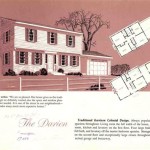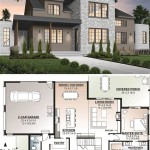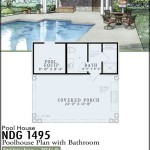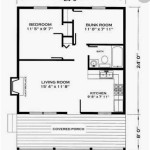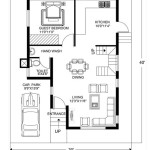House Plans for Additions on Split-Level Homes
Split-level homes, popularized in the mid-20th century, present unique challenges and opportunities when considering additions. Their staggered floor plans, while providing distinct living zones, often require careful planning to ensure a seamless integration of new space. This article will explore various house plan considerations for additions on split-level homes.
One of the primary considerations is determining the purpose of the addition. Is the goal to expand the living room, add bedrooms, create a home office, or enlarge the kitchen? Identifying the functional need will guide the design process and inform decisions regarding size, placement, and layout.
Choosing the right location for the addition is crucial. A common approach is to extend outward from the main level, creating a more expansive living area. This can involve expanding the living room, dining room, or kitchen, depending on the existing layout and the homeowner's needs. Adding a sunroom or a deck can also enhance the living space and provide a connection to the outdoors.
Another option is to build upward, adding a second story above a portion of the existing house. This strategy is particularly effective for adding bedrooms, bathrooms, or a master suite. It maximizes the existing footprint and minimizes the impact on the yard space. However, it's essential to assess the structural integrity of the existing foundation and framing to ensure it can support the added weight.
Expanding at the ground level is another viable approach, especially for split-levels with walk-out basements. This can create valuable additional living space, such as a family room, recreation room, or home theater. Proper consideration must be given to issues like natural light, ventilation, and ceiling height.
Integrating the addition seamlessly with the existing structure is paramount. This involves careful consideration of rooflines, exterior finishes, and window placement. The goal is to create a cohesive design that looks as though it was part of the original plan. Matching siding materials, roof pitches, and window styles can help achieve this cohesive look.
Connecting the addition to the existing floor plan requires careful thought. Split-levels often have half-flights of stairs connecting different levels. Incorporating the addition smoothly into this staggered layout can be challenging. The design should aim to minimize awkward transitions and maintain a logical flow between the old and new spaces.
Accessibility is another important factor to consider. Incorporating features like ramps, wider doorways, and accessible bathrooms can make the addition more usable for individuals with mobility challenges. This is particularly important if the addition includes a bedroom or bathroom.
Budget is a critical constraint that will influence all aspects of the project. The cost of an addition can vary significantly depending on the size, complexity, and finishes chosen. Working with an experienced architect and contractor can help ensure the project stays within budget.
Local building codes and regulations will also play a role in the design process. Obtaining the necessary permits and approvals is essential before starting any construction. An architect or contractor can assist with navigating the permitting process.
Energy efficiency is an increasingly important consideration in home design. Incorporating energy-efficient features into the addition can help reduce utility costs and minimize environmental impact. This can include features like insulated windows, energy-efficient appliances, and proper insulation.
Natural light plays a vital role in creating a comfortable and inviting living space. The design of the addition should maximize natural light through strategically placed windows and skylights. This can reduce the need for artificial lighting and create a brighter, more cheerful atmosphere.
Ventilation is another important factor to consider, especially in additions that include kitchens or bathrooms. Proper ventilation helps remove moisture and odors, improving indoor air quality. This can involve installing exhaust fans or incorporating natural ventilation strategies.
Storage is often an overlooked aspect of home design. The addition should incorporate adequate storage space to meet the needs of the occupants. This can include closets, built-in shelving, and storage cabinets.
Working with an experienced architect is highly recommended when planning an addition to a split-level home. An architect can help develop a design that meets the homeowner's needs, integrates seamlessly with the existing structure, and complies with local building codes.
Choosing the right contractor is equally important. A reputable contractor will ensure the project is completed on time, within budget, and to a high standard of quality. Obtaining multiple bids and checking references is essential before making a decision.
Careful planning and consideration of these factors will contribute to a successful addition that enhances the functionality, value, and aesthetics of the split-level home.

Rear Addition Split Large Master Long Kitchen With Island Corner Pantry Level Remodel Entry Foyer

Top Floor Split Foyer Level Remodel Entry

Image Result For Floor Plans Split Entry Homes With Upstairs Laundry Room And 2 5 Baths Level Foyer House

Master Suite Floor Plan Split Level

4 Bedroom Split Level House Plan 2136 Sq Ft 2 Bathroom

Layout Floor Plans Ranch House Simple

Essex Split Level Raised Ranch Home Floor Plans House Remodeling

Plan 027h 0324 The House

19 Split Level Ideas House Plans

Plan 1142 2 Bedroom Bi Level Home With Open Living Space Expandable To 4 3 Bath
Related Posts


